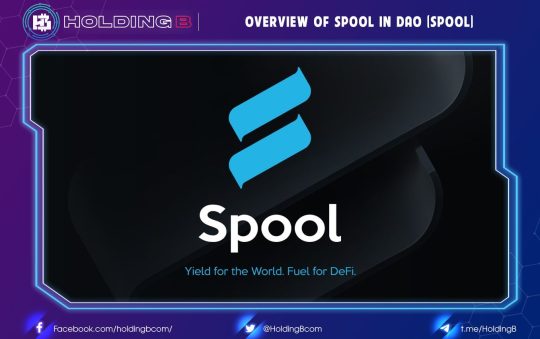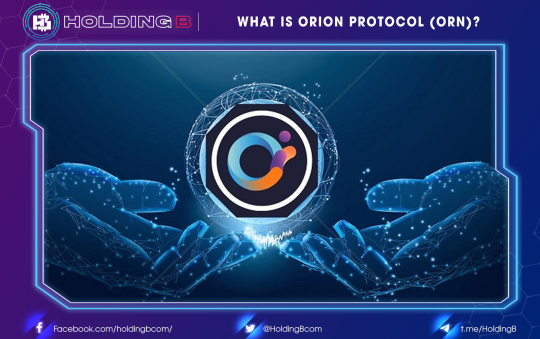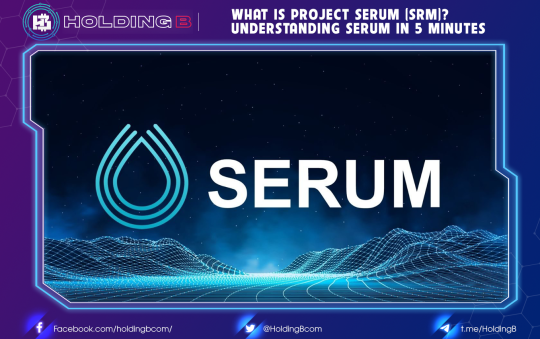Understanding Ecosystem Ecosystem
The main ecosystem is a product system built, integrated on the blockchain platform, connected and supported to provide users with the most complete services.
Projects like Ethereum, Solana, BSC, Avalanche, Atom are foundational Blockchain building projects, which themselves have been positioned as the foundation, the infrastructure for an entire ecosystem. In order to maintain and develop in an increasingly competitive market, there will be no blockchain platform that stands apart from the trend of ecosystem building and development. Only when there is an ecosystem, that Blockchain platform can retain users and cash flow.
Read more: What is DeFi? Decentralized Finance Overview
Components of an ecosystem
Blockchain is usually divided into 5 layers:
- Layer 0 – Infrastructure: Internal infrastructure or infrastructure from an external service to administer the nodes.
- Layer 1 – Network: The intermediary and interface for the Peer to Peer network, which determines how the network is encapsulated, sent, delivered, routed, and received.
- Layer 2 – Protocol: decides the method of consensus and participation in the network.
- Layer 3 – Services and options: enable application operations to connect with other technologies and platforms.
- Layer 4 – Dapps (including browsers): user interface, incorporating business logic and customer interaction.
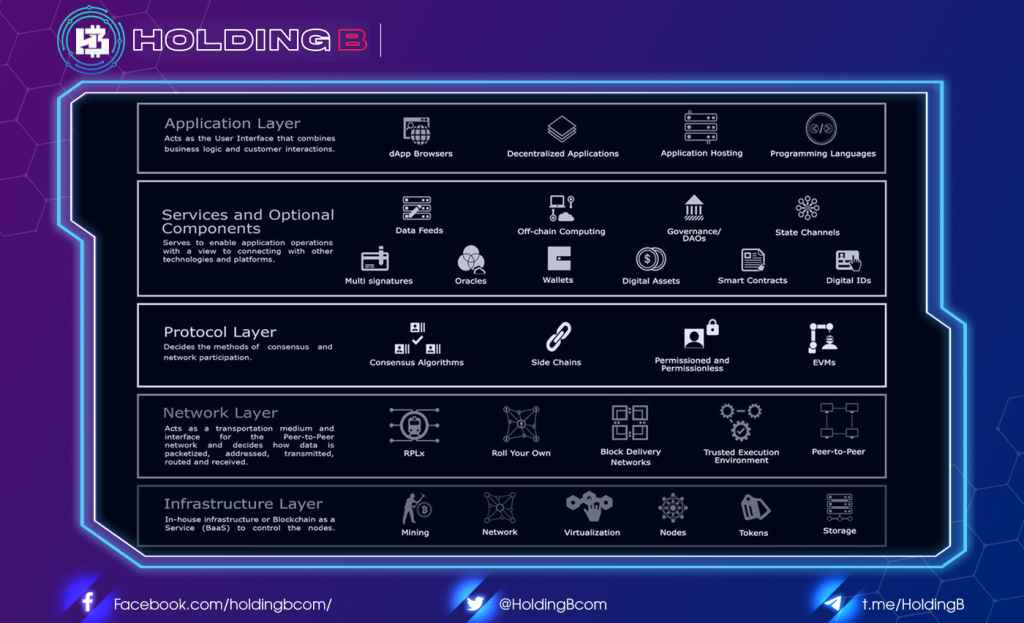
Depending on the degree of completion, the structure of an ecosystem can be in simple form (sufficient basic components) and developed form (diversification of projects).
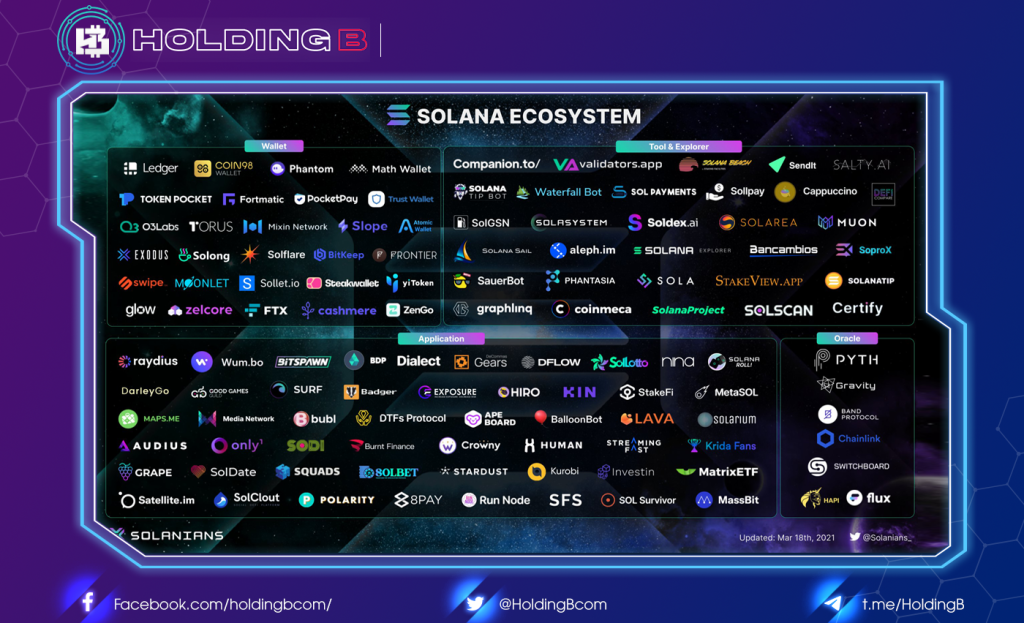
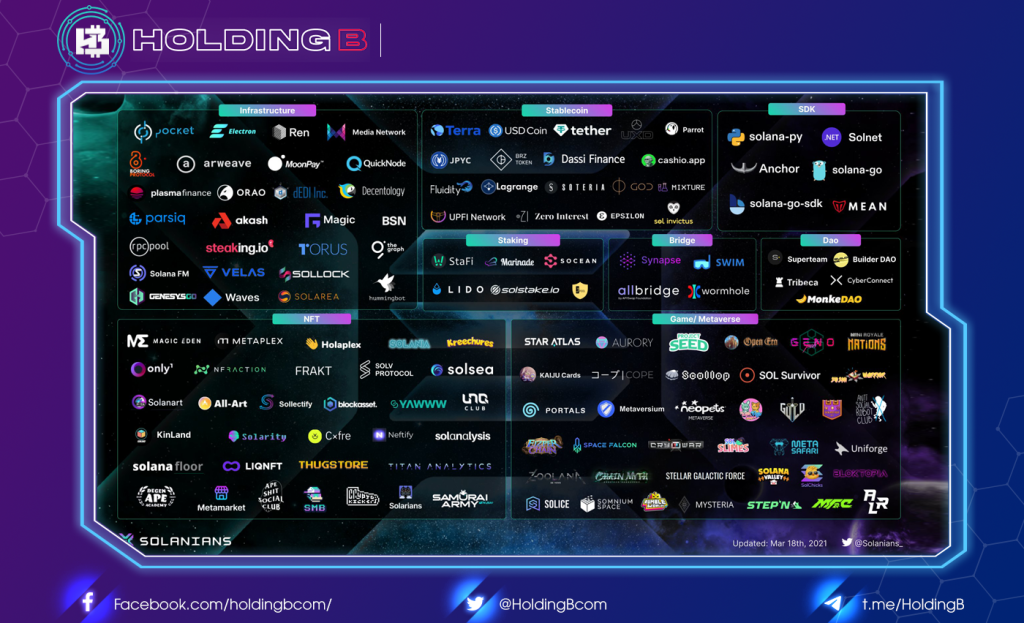

Components of an ecosystem:
- Layer-0: is the foundation, infrastructure of the ecosystem
- Wallet: support for asset storage and payments
- Stablecoins
- CEX (support)
- DeFi:
- AMM Dex: DeX . Exchange
- Lending: protocol & Dapps optimize capital use
- Synthetic Assets: Synthetic Assets
- Yield Farming: platform that allows you to join Farming and earn profits.
- Insurance: Insurance
- Aggregator: aggregators such as: Liquidity Aggregator (1inch) and Yield Farming Aggregator
- Perpetual: derivative exchange
- Asset Management: asset management
- Oracle: security
- Bridge
- NFT & Gaming
- Launchpad
- Metaverse
- KNIFE
A ready ecosystem needs to have all the basic components such as: Bridge, Stablecoin, Wallet, AMM, Lending, Yield Farming, Launchpad. These are the most basic “games” to catch the cash flow to stay with the ecosystem.
Bridge: is a bridge to transfer assets from outside the ecosystem. Since the structure of each blockchain platform is different, the need for bridges to transfer assets from one system to another is becoming more and more urgent, especially when it comes to “user experience”.
Most users are used to transferring assets directly from centralized exchanges (CEX like Binance, FTX, Okex, Kucoin, Gate…) to popular ecosystems like Ethereum, BNB Chain, Solana without no hassle. need to use other tools. However, new ecosystems such as (Avalanche, Celo, …) when there is no liquidity, there will be very few centralized exchanges to support. Therefore, it is extremely important to build or use a 3rd party solution to “transfer” assets.
Speaking of bridges, the only successful case study is probably AEB (Avalanche – Ethereum Bridge). This is the asset bridge between Ethereum and Avalanche. Not positioning itself as an Ethereum Killer but only trying to improve, Avalanche’s compatibility with Solidity programming language has facilitated the transition of large projects on Ethereum to Avalanche. AEB is a necessary and sufficient condition to realize this goal. Along with the amount of assets transferred on AEB (up from 40M to 20B at the moment) has also been the explosion of Avalanche.
Stablecoins: after all, all investment activities from entering to exiting the market, we all need stablecoins. It is no coincidence that Tether (USDT) is one of the tokens that currently holds the top 4 coinmarketcap ranking with 82B USD. Stablecoins are the “lifeblood” of an ecosystem. The more stablecoins participating in an ecosystem, the faster it can push money in.
Ream more: Stablecoins in DeFi

Wallet: is a place to store assets and support users to perform DeFi tasks. If the ecosystem you are participating in already supports many popular wallets such as Metamask, TrustWallet, etc., the larger the reachable user file.
Read more: What is a cryptocurrency wallet?

CEX (support): Currently, CEXs are the largest concentration of liquidity. The fact that CEX exchanges support direct deposit and withdrawal ports will contribute to creating an easier user experience, promoting quick cash flow to the ecosystems.
Lending & Borrowing: Optimizing the ability to use capital flows in the ecosystem, providing users with 1 more game to generate profits, connecting the DeFi puzzle pieces together.
Yield Farming: is a place to attract cash flow while keeping cash flow in the ecosystem. Reasonable Yield Farming will help the ecosystem to store cash flow as users are always involved in farming new, potential tokens at a reasonable APY with the lowest risk.
Launchpad: is also a game on the ecosystem, where Native Projects or Hot Projects can Launching.
Signs that the ecosystem is ready to explode
The price of native coin has grown strongly:
- Initially, most tokens or other DeFi tasks in the ecosystem will have to use Native Coin (as a co-transferr, fee gas …). When the money wants to flow into the ecosystem, the money must flow into the Native Coin and make it increase in price first.
- Some VCs will invest in the Native Coin project causing it to increase in price
- Pushing the price of Native Coin creates a natural Marketing effect for that ecosystem.
- Programs that attract cash flow and investment funds.
Stablecoins
To be ready to receive cash flow and keep cash flow in that ecosystem, it is necessary to complete the most basic pieces of the puzzle. The more Stable Coins, the easier the money flow will be to that ecosystem.
The growth of Total Value Locked
Increasing and sustaining cash flow in the ecosystem can be shown through TVL (Total Value Locked). Tracking the changes of TVL will help people to recognize the early signs of the cash flow of the ecosystem.
Profit Optimization:
Money flow in each ecosystem will also have its own way of going. Normally, the money flow will pour into Native Coin like DeFi (Yeild Farming, AMM, Lending) and other DApps.
Therefore, after determining which ecosystem the money flows into, we need to continue to monitor how the money in that ecosystem will go, where are the good and potential projects?
To do that, we need to follow closely the news related to the ecosystem, pay attention to the previous Native projects (invested by VCs in the ecosystem, supported by the government). ecosystem, perfect product, good Usecase Token,…) and set up a system to monitor via coinmarketcap and coinecko.
Besides, as the new ecosystem develops, there will be a lot of new projects being implemented. This is a great opportunity for us to participate in the test-net or product experience to get retroactive. Skin in the game to receive unexpected but valuable rewards.
See ya in the next article !
Don’t forget to follow useful articles about Crypto Market from team Holding B !!!
- Telegram Channel: https://t.me/HoldingBcom
- Telegram Group: https://t.me/HoldingB
- Website: https://holdingb.com/
- Twitter: https://twitter.com/HoldingBcom
- Facebook: https://www.facebook.com/holdingbcom



